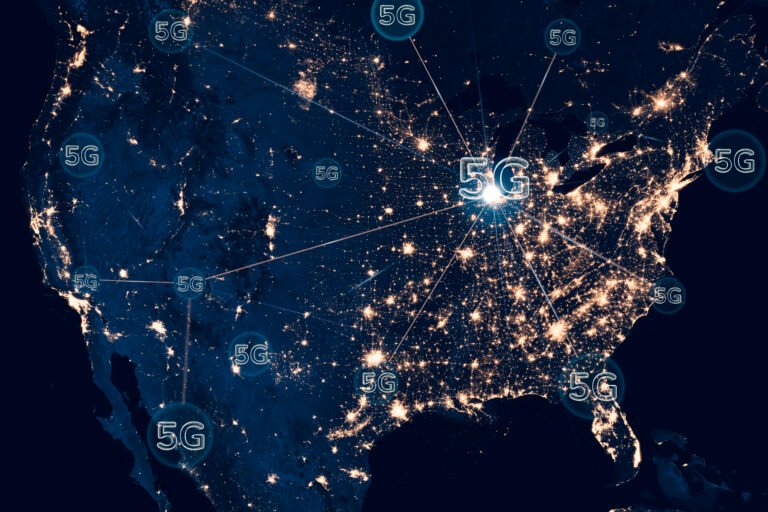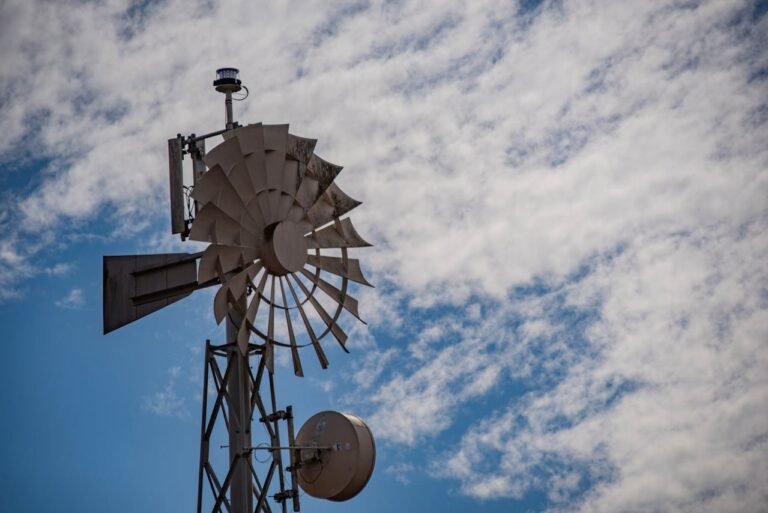6 Consumer Gadgets Already Powered by Space Tech

Space Tech is no longer just rocket-science talk for NASA or satellite operators — it quietly powers a huge slice of the consumer devices sitting in our pockets, on our wrists, and in our homes. From navigation and emergency messaging to streaming entertainment and always-on weather data, satellites and space systems enable features most users take for granted. This article walks through six everyday consumer gadgets that already rely on Space Tech, explains how the satellite component works, highlights real-world products you can buy today, and gives practical tips for getting the most from each device while managing privacy, cost, and reliability.

Table of Contents
1. Smartphones — GNSS for navigation, timing, and satellite backup
Most people think of their phone as “connected” only when cellular or Wi-Fi is available, but virtually every modern smartphone depends on Space Tech for one critical feature: positioning. Global Navigation Satellite Systems (GNSS) — GPS (USA), Galileo (EU), GLONASS (Russia), BeiDou (China) and regional systems — provide timing and location that power maps, ride-hailing, fitness tracking, geotagged photos, and far more. Phone manufacturers integrate GNSS receivers and multi-constellation support so a phone can see dozens of satellites and get accurate fixes even in urban canyons. Apple
Beyond navigation, smartphones have started to adopt satellite messaging and emergency SOS features. Apple introduced Emergency SOS via satellite on iPhone 14 — a service that lets users contact emergency services via satellite when cellular/Wi-Fi are unavailable — and has continued to expand satellite features and carrier integrations since. These satellite features route emergency texts or short messages via partner satellite constellations when you’re off-grid, which can be life-saving in remote locations. Apple
Why it matters to you: GNSS is the backbone of location-based experiences. When cellular fails, satellite SOS or carrier satellite-to-cell initiatives can provide a limited but crucial lifeline.
2. Smartwatches & wearables — location, fitness metrics, and satellite SOS
Smartwatches borrowed GNSS and satellite-based tricks from phones and made them wearable. Devices such as the Apple Watch Ultra family now support satellite-based Emergency SOS features (texting rescuers when you’re off-grid) and high-precision GNSS tracking for outdoor sports, route recovery, and advanced training analytics. Apple’s recent Watch Ultra models explicitly advertise satellite connectivity for off-grid emergency messaging. Apple
Why wearables benefit from Space Tech: GNSS chips on watches provide real-time pace, route mapping, elevation data, and geofencing — crucial for athletes, hikers, and field workers. The addition of satellite SOS features means lifesaving alerts can be sent without carrying a phone.
Practical note: satellite SOS on watches often has the same limitations as phones — it requires a clear view of the sky, and messaging is optimized for short text or structured emergency data rather than long-form chat.
3. Satellite messengers & personal locators — reliable off-grid comms (Garmin, ZOLEO)
For people who go well beyond where phones reliably work (mountaineers, sailors, remote field teams), consumer satellite messengers are the go-to gadget. Devices like the Garmin inReach family provide two-way text over global satellite networks, SOS functions routed to emergency response centers, and location sharing — all independent of cellular networks. These gadgets are compact, purpose-built, and subscription-based (satellite airtime). Garmin
Another example is ZOLEO, which offers a small satellite communicator that pairs with your phone but can also operate standalone. These products are designed for predictable, reliable messaging from anywhere on Earth and are widely used by adventurers, mariners, and safety-conscious travelers.
Why choose a dedicated messenger? They have greater reliability, longer battery life (for the same communications workload), and professional-grade SOS handling compared with ad-hoc phone satellite features. If your life or business depends on messages reaching someone when cellular is down, a dedicated satellite messenger is still the gold standard.
4. Home & portable satellite internet terminals — Starlink and the new consumer satellite broadband
Consumer satellite internet terminals have moved from clunky dishes to compact, near-plug-and-play kits. SpaceX’s Starlink is the best-known consumer option today: compact user terminals that connect to a LEO constellation to deliver high-speed internet to homes, RVs, and businesses in areas with limited fixed broadband. Starlink offers several form factors (residential, portability/roam, and compact “mini” units) intended for home use, travel, and even enterprise connectivity. Starlink
Why this is game-changing: for rural households, small businesses, and travelers, Space Tech now enables internet access that was previously expensive or impossible. Modern terminals include integrated Wi-Fi routers and simplified self-install workflows.
Practical tip: portability features let you take Starlink terminals on the road (often for an extra fee), which is attractive for RVers, remote crews, and temporary event setups. But remember to check local regulations and roaming availability before relying on portability for travel. Engadget
5. Satellite TV & satellite radio — entertainment beamed from space to your living room and car
Satellite broadcast services have been consumer staples for decades. Satellite TV (DISH, DirecTV and regional equivalents) delivers hundreds of channels via geostationary satellites to rooftop dishes and set-top boxes; the principle is simple: a broadcaster uplinks content to a satellite, which then beams it back down to subscribers. Satellite TV remains important where cable or fiber coverage is limited. DIRECTV
Similarly, satellite radio providers (notably SiriusXM) use satellites to deliver audio programming to cars and homes across wide regions. Satellite radio is resilient, widely integrated into vehicle entertainment systems, and—because it uses space-broadcast architecture—less dependent on local cellular coverage. SiriusXM also bundles infotainment data (traffic, weather, updates) via its satellite network into many cars. SiriusXM
Consumer angle: While streaming services have grown, satellite broadcast remains a reliable option for live TV in remote areas and for satellite radio listeners who want a consistent nationwide signal without depending on cellular networks.
6. Weather stations, smart-home devices & apps — satellite eyes for your local forecasts
When your weather app shows high-resolution satellite imagery of an incoming storm, those images came from meteorological satellites run by agencies like NOAA (GOES series) or ESA. Consumer-facing weather apps (Windy, Weather Underground, AccuWeather and many others) ingest satellite-derived observations and imagery to power high-quality forecasts, radar overlays, and satellite-loop animations. NOAA and other agencies provide public satellite imagery feeds that commercial apps and consumer devices leverage. NOAA / NESDIS / STAR website
Some smart home weather stations also fuse local sensor data with satellite-based forecasts to offer more accurate home microclimate predictions. For outdoor enthusiasts, farmers, and anyone who plans around the weather, satellite-fed apps and devices deliver timely, global coverage that terrestrial sensors alone cannot match.
Quick comparison: how each gadget depends on Space Tech
| Gadget | Typical Space Tech used | Consumer benefit |
|---|---|---|
| Smartphones | GNSS (GPS/Galileo/GLONASS/BeiDou), satellite SOS/messaging | Accurate navigation, emergency contact off-grid |
| Smartwatches | GNSS, satellite SOS (on some models) | Fitness tracking, route precision, SOS without phone |
| Satellite messengers | LEO/MEO satellite networks (Iridium/Globalstar/other) | Guaranteed two-way messaging wherever you are |
| Satellite internet terminals | LEO constellations (Starlink, OneWeb, others) | Broadband internet in unserved/underserved areas |
| Satellite TV / Radio | GEO broadcast satellites; satellite radio constellations | Wide-area broadcast entertainment and infotainment |
| Weather devices & apps | Meteorological satellites (GOES, Himawari, Meteosat) | Global satellite imagery & improved forecasting |
Tips: buying, privacy, and offline resilience
1. For travelers and adventurers — carry a dedicated satellite messenger for true off-grid two-way messaging and SOS; phones’ satellite features are convenient but less purpose-built. See Garmin inReach and ZOLEO for rugged, tested models. Garmin
2. For rural homes — Starlink and similar satellite broadband options can be better than DSL or no internet at all; check local availability, equipment costs, and any portability limitations before subscribing. Starlink
3. For privacy-conscious users — GNSS provides passive location to apps; always review app permissions and OS privacy controls. Satellite messaging features often send structured emergency data and location; understand the data shared with emergency services. Apple’s support pages explain what Emergency SOS via satellite shares and how it works. Apple Support
4. For car buyers — if you use satellite radio or live traffic/weather feeds via satellite, verify manufacturer integration and subscription costs (SiriusXM often requires a separate subscription). SiriusXM
5. For hobbyists — learning to interpret raw GOES/NOAA imagery can be powerful; NOAA provides public satellite image viewers and data you can use for personal projects. NOAA / NESDIS / STAR website
FAQs (6)
Q1: Is satellite connectivity on phones free?
A: Not always. Emergency SOS satellite features (like Apple’s initial emergency messaging) have historically been offered free for limited periods, but carriers and companies are experimenting with pricing and subscriptions for broader satellite messaging or satellite-to-app features. Always check current provider terms before relying on a service for long-term use. The Verge
Q2: Will satellite internet replace home fiber?
A: Satellite broadband complements but generally won’t replace fiber in dense urban cores where fiber is available. Satellites excel where fiber is cost-prohibitive or unavailable, and LEO systems are now competitive for many rural households and mobile use cases. Starlink
Q3: Do satellite messengers need a subscription?
A: Yes. Devices like Garmin inReach and ZOLEO require a subscription plan for satellite airtime; pricing varies by provider and plan (monthly vs. annual, message volume, SOS handling). Garmin
Q4: Are satellite signals secure?
A: Satellite links are susceptible to interception the same way any wireless link can be, so vendors often implement encryption for message payloads and strong authentication. For critical uses, prefer devices and services that emphasize end-to-end security and robust account controls.
Q5: Can satellites be used for voice calls from a phone?
A: Traditional satellite phones provide full voice, but consumer phone satellite features today tend to focus on text and emergency messaging rather than continuous voice calls. Some carriers and vendors are expanding satellite-to-cell capabilities, but bandwidth and latency constraints usually make text and limited voice the primary consumer features. The Verge
Q6: How accurate is GNSS on consumer gadgets?
A: Accuracy varies: sub-meter accuracy is possible with multi-constellation receivers and augmentation services, while standard smartphone GNSS in urban environments may be several meters off. High-precision consumer receivers and techniques (RTK, differential GNSS) can greatly improve accuracy for surveying or precision agriculture but are usually separate devices or services.
Conclusion — Space Tech is already in your pocket, watch, and living room
Space Tech isn’t a distant specialty anymore — it’s embedded in the consumer gadgets we use daily. Smartphones and wearables rely on GNSS for navigation and timing; phones and watches increasingly include life-saving satellite SOS features; dedicated satellite messengers remain essential for true off-grid communications; Starlink-style consumer terminals bring broadband to remote homes and travelers; satellite TV and radio keep entertainment and infotainment flowing across wide areas; and weather apps and smart-home devices lean on meteorological satellites for global situational awareness. Understanding which part of your gadget’s features depend on satellites helps you make smarter buying choices, plan for outages, and respect tradeoffs around privacy, cost, and reliability.






